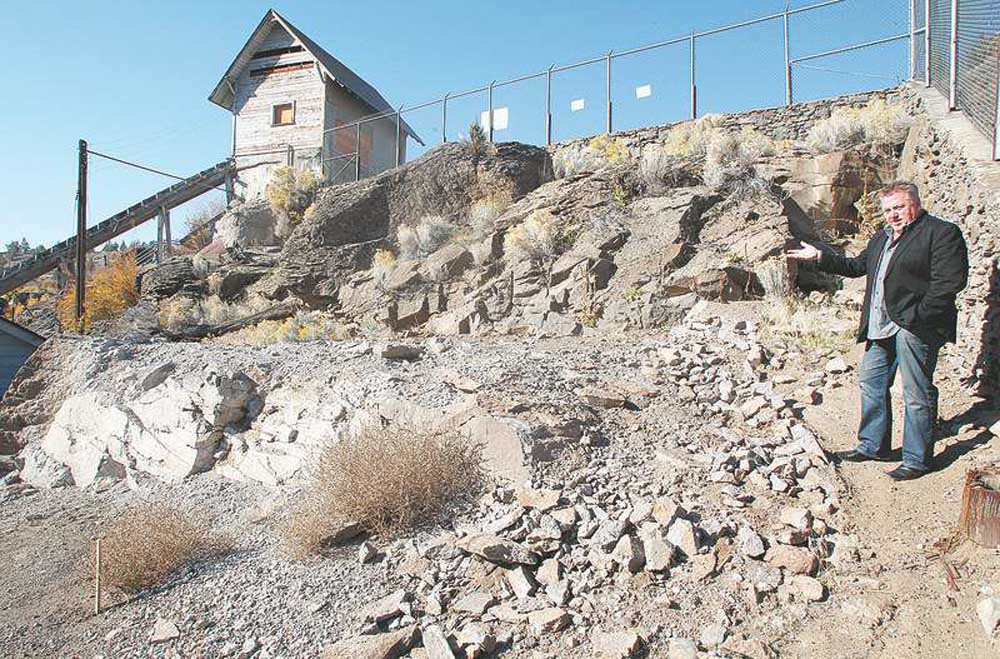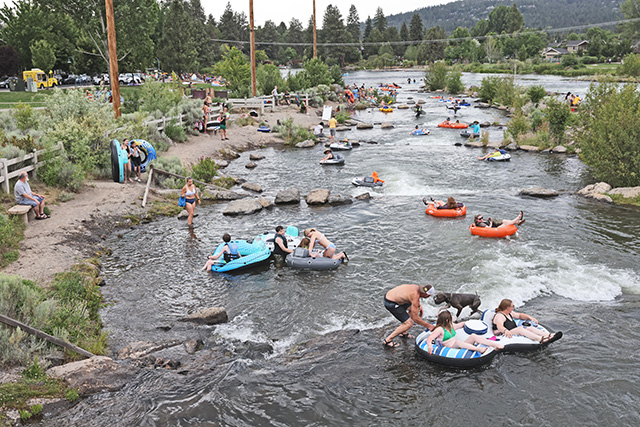COID unhappy with Cline Falls tests
Published 5:00 am Friday, October 25, 2013

- Central Oregon Irrigation District Manager Steve Johnson points out an area where an old power plant was located near Cline Falls.
What began as a county code enforcement issue surrounding PacifiCorp’s lease termination and equipment removal at the historic Cline Falls Power Plant now includes public safety, environmental protection and site cleanup issues.
PacifiCorp in February gave notice to Central Oregon Irrigation District that it planned to terminate its 100-year lease on the power plant, according to COID Manager Steve Johnson. Since then, the two entities have been at odds about the electric company’s responsibility for cleaning up and restoring the site about 5 miles east of Redmond on the Deschutes River.
COID complained formally to the Deschutes County Historic Landmarks Commission earlier this year, stating it believed PacifiCorp violated county code by removing equipment from the site, which was designated historic in 1992. The commission agreed with COID, stating the historic designation includes the entire site — not just the dam, penstock and powerhouse, the three structures inventoried on the 1992 designation.
PacifiCorp appealed the commission’s decision, bringing the issue to the County Development Department for evaluation and a ruling by the County Commission. The commission is reviewing the case and could rule near the end of the year.
Though COID’s original complaint mentions only the equipment removal, it turns out the two entities have other tenant-landlord issues.
“PacifiCorp work crews came in December 2012 to remove the equipment without notifying us,” Johnson said Thursday. “During this time they sent us a permit to sign so they could remove dirt as a precautionary measure.”
Johnson refused to sign the permit to allow PacifiCorp to remove about 7.5 cubic yards of dirt where the power plant transformers were located. Because transformers generate heat, polychlorinated biphenyls, or PCBs, were often used as coolant fluids until they were banned in the U.S. in 1979. Old power plant sites typically yield some PCB soil contamination.
Johnson said he refused PacifiCorp’s request to remove soil from the site because he wanted his own environmental analysis to be involved in the process.
“I wanted to know what they found, what was in the ground,” he said. “We’re not trying to find a big problem with pollution, it’s just that now is the time for us to take care of proper cleanup.”
Johnson said the power company agreed to provide COID with the results of soil samples collected by PacifiCorp analysts, but those results never arrived. Bob Gravely, spokesman for PacifiCorp, said that is not true.
“When we collected the 42 samples they were on site with their own consultant,” he said. “The samples were collected in February and we gave them the results some time after that.”
Gravely said in an email that PacificCorp sent the soil analysis to COID’s attorney on May 30. He said the soil analysis identified contaminants and on that basis, PacificCorp wanted to remove the 7.5 cubic yards of soil from around the powerhouse. He did not specify what contaminants were identified and said that may take a few days to track down.
“If COID ever wanted to know if we removed any soil, all they had to do was ask,” Gravely said in an email. “Which they did not.”
In February, PacifiCorp removed several items from the site, including power-generating equipment from inside the powerhouse, as well as transformers, utility poles and cables from around the powerhouse. What’s left are several aging wooden, metal and concrete structures in various states of disrepair, including a concrete dam partially blocking and diverting the river.
“There is a fundamental disagreement that they have more responsibility for the site,” Johnson said. “We are going to be holding them accountable for anything left behind.”
Although the site has historical significance for the area, Johnson said the structures should ultimately be removed and the river allowed to return to a more natural state now that it’s no longer a working power plant.
“We appreciate the historical aspect, but its useful life is over,” he said. “When you deal with a historic resource like this and its use is gone, the proper thing to do is to document and keep that information, but the structure can be removed.”
Gravely said COID has not formally asked for removal of the dam or other structures at the power plant.
“In general, we believe we have complied fully with the terms of the lease,” he said.
The power plant site is surrounded by cyclone fence topped with barbed wire. “No trespassing” signs hang on the fencing, but that doesn’t always keep people off the property. The barbed wire has been bent out of the way in several places so people can scale the fence, Johnson said.
“See that? That’s vandalism,” he said, pointing to several missing pieces of siding on the powerhouse. “There’s nothing inside those buildings, but people want to get in anyway. Maybe they think there’s copper in there or something. We come out here about once a week to fix things.”
There are several wooden catwalks at the site with splintered, sagging planking. A rickety handrail on one side is the only thing keeping anyone who tries to cross one of the longer catwalks from plummeting into the canyon below. A deep wooden flume is on the other side, which has no handrail at all.
“It’s a public safety hazard,” Johnson said. “But at the end of the day the dam is going to be what is the big issue.”
Johnson said the concrete dam was installed in the 1940s. He believes PacifiCorp installed it, but Gravely said the power company did not. It was built to divert river flow into a smaller channel, increasing volume and force, and therefore allowing for more power generation.
Johnson said PacifiCorp should be responsible for removing the dam.
“Removing a dam is a big deal because of environmental regulations,” he said. “It’s likely going to turn into litigation because of the way things have been handled by them.”
If the situation goes to the courts, PacifiCorp is likely to fight COID’s position.
“We disagree with Mr. Johnson’s interpretation of our obligations under the lease and state law,” Gravely said in an email. “We disagree with Mr. Johnson’s inference that COID does not own the remaining infrastructure at the site.”







